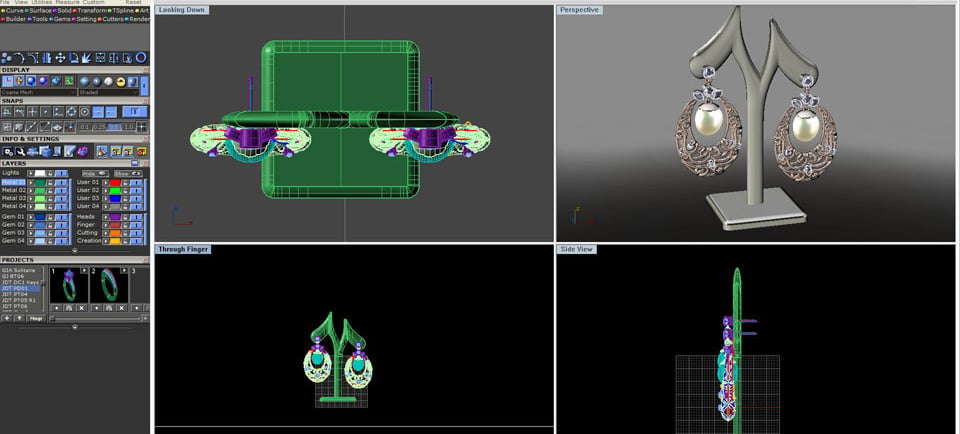The Role of Technology in Modern Jewelry Manufacturing
8/19/20252 min read


Introduction to Modern Jewelry Manufacturing
In an age where technology permeates every industry, jewelry manufacturing stands as a testament to the transformative impact of innovation. The integration of advanced technologies such as 3D printing, computer-aided design (CAD), and automation has revolutionized how jewelry is conceptualized, designed, and produced. This blog explores the pivotal role of technology in modern jewelry manufacturing, detailing how it shapes quality, efficiency, and creativity.
Advancements in Design with CAD
The advent of computer-aided design (CAD) has significantly enhanced the design aspect of jewelry manufacturing. Designers now have the ability to create intricate designs with precision and speed that were previously unattainable with traditional methods. CAD software allows for easy modifications, enabling designers to experiment with various styles and materials without incurring significant costs. This rapid prototyping capability encourages innovation and creativity in creating unique jewelry pieces tailored to consumer desires.
3D Printing: From Concept to Reality
3D printing technology has emerged as a game-changer in the jewelry industry. By allowing manufacturers to produce pieces directly from digital models, 3D printing simplifies the manufacturing process, reducing lead times significantly. Jewelers can create highly detailed designs and replicate them with consistent quality. Furthermore, 3D printing facilitates the use of a variety of materials, including precious metals and innovative polymers, expanding the scope of design possibilities. This process not only meets consumer demand for personalized items but also supports sustainable practices by minimizing waste during production.
Automation in Jewelry Production
The incorporation of automation in jewelry manufacturing has resulted in enhanced productivity and quality control. Automated machinery can perform repetitive tasks with precision, ensuring that each piece meets the desired specifications. This technology reduces the risk of human error and allows artisans to focus on more intricate aspects of the production process. Additionally, automation provides manufacturers with the scalability needed to meet growing market demands without compromising craftsmanship.
The Future of Jewelry Manufacturing
As technology continues to evolve, the jewelry manufacturing industry will likely see further innovations. Emerging technologies such as artificial intelligence (AI) and blockchain are poised to influence design processes and supply chain transparency respectively. For instance, AI can analyze consumer trends to predict future designs, while blockchain can provide traceability of materials, ensuring ethical sourcing and sustainability. By embracing these advancements, the jewelry industry is set to redefine its relationship with consumers, fostering greater trust and engagement.
Conclusion
In conclusion, technology plays an indispensable role in modern jewelry manufacturing, reshaping the design, production, and marketing processes. The integration of CAD, 3D printing, and automation not only enhances the capabilities of designers but also promotes efficiency and sustainability. As the industry moves forward, the continued adoption of innovative technologies will be essential in meeting the evolving demands of consumers while preserving the art of jewelry making.




